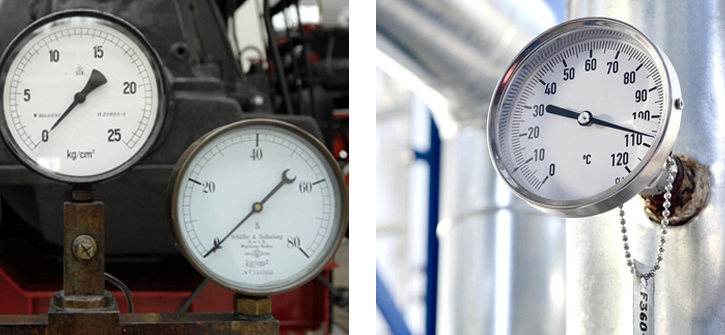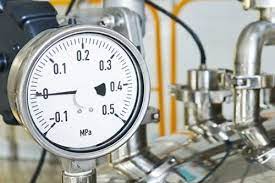Infrared Thermometers for Industrial Use: A Comprehensive Guide
 Sep 07, 2023|
Sep 07, 2023| View:742
View:742Infrared thermometers have become indispensable tools in various industries for their non-contact temperature measurement capabilities. They offer numerous advantages in terms of speed, accuracy, and safety. In industrial settings, these devices are used for a wide range of applications, from monitoring machinery temperatures to ensuring product quality. In this comprehensive guide, we will delve into the use of infrared thermometers in industry, their advantages, applications, and considerations for selecting the right device.

Understanding Infrared Thermometers
Infrared thermometers, also known as non-contact or laser thermometers, measure temperature by detecting the infrared radiation emitted by an object. This technology allows for temperature measurement without physical contact, making it ideal for applications where traditional contact thermometers may be impractical or unsafe.
In industrial settings, these devices typically consist of a handheld unit with a laser pointer for aiming at the target, a temperature sensor, and a display screen that shows the temperature readings. Some models also feature data logging capabilities and the ability to transmit data to other devices.
Advantages of Infrared Thermometers in Industry
Infrared thermometers offer several key advantages that make them valuable tools in industrial applications:
Non-Contact Measurement: Infrared thermometers can measure temperature from a distance, eliminating the need for direct contact with the object or surface being measured. This is especially beneficial when dealing with moving or hazardous objects.
Speed and Efficiency: Infrared thermometers provide almost instant temperature readings, allowing for quick and efficient monitoring of multiple points within a short time frame.
Safety: These thermometers are exceptionally safe to use, as they don't require physical contact with hot or potentially dangerous surfaces. This minimizes the risk of burns or injuries to operators.
Accuracy: Modern infrared thermometers offer high levels of accuracy, making them suitable for a wide range of industrial applications, including quality control and maintenance.
Versatility: Infrared thermometers can be used to measure temperatures of various surfaces and objects, from machinery and equipment to liquids and gases.
Applications in Industrial Settings
Infrared thermometers find extensive use in industrial settings across various sectors. Here are some common applications:
Maintenance and Reliability: Infrared thermometers are used to monitor equipment and machinery temperatures, helping maintenance teams identify overheating components and prevent costly breakdowns.
Quality Control: In manufacturing processes, infrared thermometers ensure that products meet specific temperature requirements, guaranteeing product quality and consistency.
Safety Inspections: Industrial safety officers use these thermometers to assess temperature-related hazards and ensure compliance with safety regulations.
Energy Efficiency: Infrared thermometers are employed to identify heat leaks and insulation problems in buildings and industrial facilities, aiding in energy conservation efforts.
Food Industry: In food processing and storage, infrared thermometers help maintain food safety by monitoring temperatures in refrigerators, freezers, and ovens.
Electrical and Electronics: These thermometers are used to detect overheating in electrical panels, circuit boards, and electronic components, preventing electrical failures and fires.
Considerations for Selecting an Infrared Thermometer
When choosing an infrared thermometer for industrial use, several factors should be taken into account:
Temperature Range: Ensure that the thermometer's temperature range matches the requirements of your application. Some models are designed for extreme heat, while others are better suited for sub-zero temperatures.

Accuracy: Consider the level of accuracy needed for your specific application. High-precision instruments may be necessary for critical temperature measurements.
Emissivity: Emissivity is the measure of an object's ability to emit infrared energy. Different materials have varying emissivity values, and it's essential to select a thermometer with adjustable emissivity settings to obtain accurate readings.
Distance-to-Spot (D:S) Ratio: The D:S ratio indicates the size of the measurement area at a given distance. A higher ratio allows for measurements from a more extended distance, making it suitable for larger objects.
Data Logging and Connectivity: If you need to record and analyze temperature data over time, choose a thermometer with data logging capabilities or one that can connect to a computer or mobile device for data transfer.
Durability and Build Quality: Consider the ruggedness of the thermometer, especially if it will be used in harsh industrial environments. Look for models with robust construction and protective features.
Battery Life: Check the battery life of the thermometer, especially if it will be used continuously throughout the workday. Long battery life can enhance productivity.
User-Friendly Interface: Ensure that the thermometer has an intuitive and easy-to-read display, as well as straightforward controls.
Infrared thermometers have revolutionized temperature measurement in industrial settings, offering speed, accuracy, and safety. Their versatility and non-contact nature make them indispensable tools for maintenance, quality control, safety inspections, energy efficiency assessments, and more. When selecting an infrared thermometer for industrial use, carefully consider factors such as temperature range, accuracy, emissivity settings, distance-to-spot ratio, data logging capabilities, durability, battery life, and user interface to ensure that it meets the specific needs of your application. With the right infrared thermometer in hand, your healthcare institution can benefit from improved efficiency, enhanced safety, and reliable temperature monitoring.










View More(Total0)Comment lists